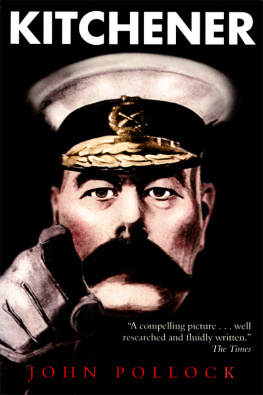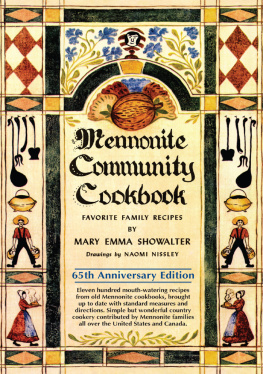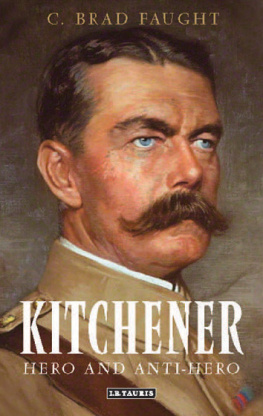
KITCHENER
An Illustrated History
John English and Kenneth McLaughlin
The history of Kitchener is unique among cities in southern Ontario. Although Kitchener shares so much of the character of the region today, its past was considerably different. Until 1916, Kitchener was Berlin, Canadas German capital Over two-thirds of the residents were of German origin; many retained strong traces of that past. These became controversial when Canada fought two wars against Germany. By the middle of the First World War, the idea of a patch of Germany in the heart of southern Ontario became untenable. Berlin became Kitchener, but not without a battle which split the small city.
This is the first scholarly history of Kitchener. Based on wide-ranging research, it illustrates how a community so unlike its neighbours became a part of the broader Canadian community in the twentieth century. Much of the information is new, and many myths are punctured. The romantic mists which have surrounded the story of the early Mennonite settlers are lifted. The full story of the great controversies of the First World War is told for the first time. The impact of the Depression and the extraordinary economic boom which accompanied the Second World War are analyzed. Kitcheners sometimes-eccentric politicians are seen, not as deviations, but as representatives of a long tradition of civic populism.
Over 100 photographs accompany the text. Maps and tables further illuminate Kitcheners development. Kitchener: An Illustrated History will be of interest, not only to its residents, but also to Canadians generally who are interested in the history of multiculturalism and the transition from rural to urban Canada. This book illustrates the difficulties as well as the rewards of maintaining distinct cultural traditions. The problems it identifies concern many Canadians today.
John EnglishDepartment of History, University of Waterloo, is the author of The Decline of Politics: The Conservatives and the Party System, Robert Borden: His Life and World, and co-author of Canada Since 1945: Power, Politics, and Provincialism.
Kenneth McLaughlinHead of the History Department, St. Jeromes College, University of Waterloo, has been co-editor of Ontario History. He is also active in preserving Ontarios architectural heritage.
KITCHENER
An Illustrated History
KITCHENER
An Illustrated History
John English and Kenneth McLaughlin
Wilfrid Laurier University Press
Canadian Cataloguing in Publication Data
English, John, 1945
Kitchener : an illustrated history
Bibliography: p.
Includes index.
ISBN 0-88920-137-4 (bound). - ISBN 0-88920-141-2 (pbk.)
1. Kitchener (Ont.) - History. I. McLaughlin,
Kenneth, 1943- II. Title.
FC3099.K5E64 1983 971.3'45 C83-098930-7
F1059.5.K5E64 1983
Copyright 1983
WILFRID LAURIER UNIVERSITY PRESS
Waterloo, Ontario, Canada N2L 3C5
83 84 85 86 4 3 2 1
Cover design by Polygon Design Limited, incorporating Peter Etril Snyders print of the Joseph Schneider House
No part of this book may be stored in a retrieval system, translated or reproduced in any form, by print, photoprint, microfilm, microfiche, or any other means, without written permission from the publisher.
To
Grace Schmidt
and the tradition she represents
CONTENTS
by Alan F. J. Artibise
For generations, one of the main forms of Canadian historical writing has been biography. Indeed, it is sometimes said that Canadian historians and writers have elevated this form to standards rarely equalled elsewhere. This tradition is also apparent in the writing of urban biography. There is in this country a long list of volumes that claim to be urban biographies and that attempt to capture the personality of a particular community. Unfortunately, many of these volumes are of interest mainly to local residents since the authors usually only chronicle local events and emphasize the greatness of community achievements. Until recently, urban biographers rarely asked searching questions about the process of urbanization, contenting themselves with elaborate accounts of the first settlers to establish ties with a glorious past. This is not to deny that these volumes are useful in the search for historical understanding; they are. The antiquarian writers base their work on the assumption that specific towns and cities have distinct personalities, and this is a tradition that still has value. As well, local histories serve as valuable sources. They provide outlines of past events and often suggest subjects for further study.
For all its value, however, antiquarian local history remains parochial; and, in an age when the purpose of history is no longer to glorify the past but to enable a society to understand itself, new approaches are necessary. A more sophisticated methodology must be adopted, one that includes more interpretation and analysis of historical events, exploration into the causes of social change, the study of the relationship among the several dimensions of human experience (economic, political, social, demographic, and spatial), and the use of the relevant tools and concepts developed by the social sciences. In addition, as H. J. Dyos noted, the urban historian has to be concerned with the historical process of urbanization, a process which envelops an enormous range of places, not only within one country, but across the face of the globe. The challenge is to relate this complex process to the specific experience of particular places; to use the particularity of the place to illustrate the generalities of the process, and vice versa. In this way local history ceases to be parochial and becomes part of the larger story.
The authors of this volume have accepted these challenges, for this history of Kitchener not only examines all aspects of community development but relates the parts to a larger context. While Professors English and McLaughlin have discovered Kitcheners distinct personality, they have also provided analysis that lifts the narrative of the citys experience to the level where it elucidates questions that are of concern to Canadians generally. These questions include such issues as ethnic relationships, regionalism, provincial-municipal interaction, social mobility, labour-management relationships, urban planning, and general economic development.
The authors text is also enhanced by a fine collection of illustrations. This illustrative material is not only visually enjoyable, it also plays an essential part in recreating and understanding the past. While photographs and maps cannot by themselves replace the written word, they can be used as a primary source in a way equivalent to more traditional sources. The illustrations in this volume capture the images of a wide variety of situations in Kitchener, allowing our generation to understand better the forms, structures, fashions, and interrelationships of earlier periods.
There is, finally, one other noteworthy feature of this volume in particular and good urban biography in general. It is to be hoped that the residents of Kitchener will, as an important part of their process of planning for the future, turn to their history. Progress is, after all, related to the legacy of the past, just as a city is related to the larger society. The goal of looking backwards is to seek to understand and use the past in a creative way. Thus, the value of volumes such as this history of Kitchener is that by outlining and analyzing how the city worked in the pastby examining its successes and failurescitizens can better understand how they got to where they are today. It is also to be hoped that an awareness of their history will assist the residents of Kitchener in deciding for themselves what they can do to control and plan future urban development.
Next page









